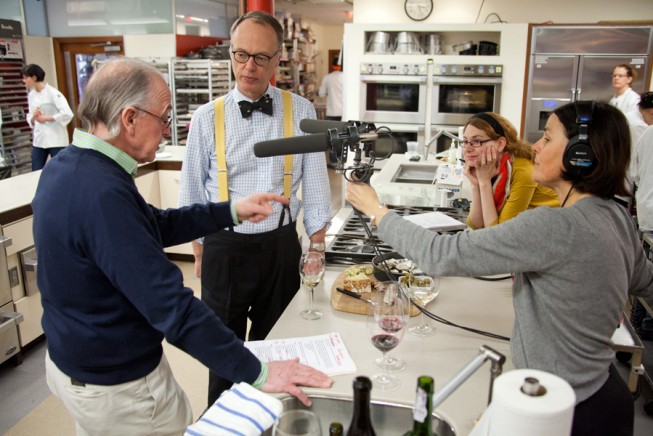
If you’re a regular listener to America’s Test Kitchen Radio, you know that all sparkling wine is not Champagne and cannot be so-called, and that in most places where winemaking has long been a part of local culture, there is a tradition of making bubblies of some sort. Chris and I have tasted and talked about fizzy wine from the north of Italy and the south of France, from Austria, California, and even New Mexico.
We’ve also discussed how most of these wines are made: a process that involves starting with fully vinified (that is, completely fermented), still (meaning no bubbles) wine and bottling it with a carefully measured dose of sugar and yeast. This provokes a second fermentation inside the bottle, which consumes the sugar (we’re back to dry wine again) and suffuses the contents with carbon dioxide, producing those lovely bubbles.
This technique of making wine sparkle is widely known as the Champagne Method, but those pesky Champenois don’t let us use this expression except when speaking of their own wine, so we have to be satisfied with the circumlocution “Traditional Method” to describe it when it appears elsewhere.
The story of how the technique came to be has been told many times—mostly without due regard for what actually happened. No, the technique was not invented at Hautvilliers by Dom Perignon. More likely it was the work of Englishman Christopher Merrit, who described it in a paper to his colleagues at the Royal Society in 1662.
But this doesn’t mean that wine with bubbles was unknown before that. It can and did happen more or less accidentally when a fermentation had shut down prematurely with the onset of winter and then perked up again in the spring, perhaps after the wine had been shipped.
Today a class of wines produced via this more traditional approach has become suddenly trendy. The process is known as the Methode Ancestrale or Methode Rurale, and it’s really quite simple: You get your fermentation started and then cool the wine down to the point where fermentation is halted. Then, you bottle it. What happens next can’t properly be called a second fermentation since it’s really just a continuation of the first. It’s typical for the resulting wine to be lowish in alcohol with a bit of sweetness and under less pressure than Champagne Method wines. And because the yeast residue may still be in the bottle, the wine may be a little cloudy or foggy.
The general term for these wines is “Pet-Nat,” short for petillant naturel, or “naturally (lightly) sparkling” wine. They’re very much in vogue right now—young somms have discovered them and are very excited about them. Chances are good that if you haven’t already, you’ll be encountering them soon on some hip wine list.
Pet-Nats we tasted for the radio spot included:
- Domaine de la Pepiere “Pepi Bulles” Vin Mousseux
- Stephane Serol “Turbullent” Côtes Roannaise
- Giovanni Canello “Caneva da Nani” Valdobbiadene
- Francois Chidaine Vouvray Petillant
But be forewarned, these wines are made in tiny amounts by small producers and can be hard to find. So, ask your local retail shop about the category. They’ll likely have a few of their own favorites to suggest you try.
Stephen Meuse can be reached at stephenmeuse@icloud.com